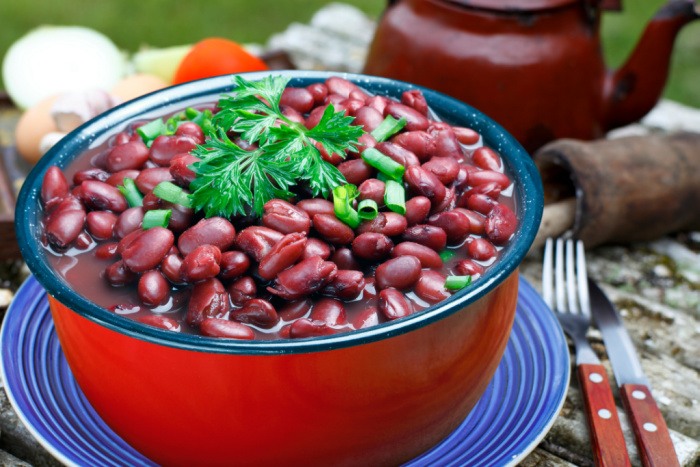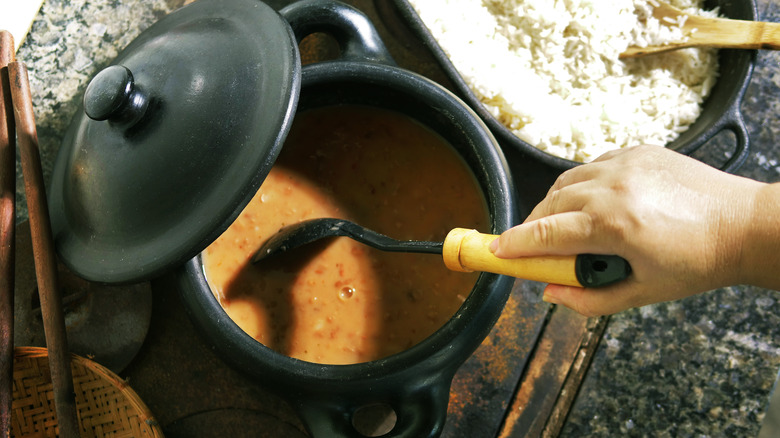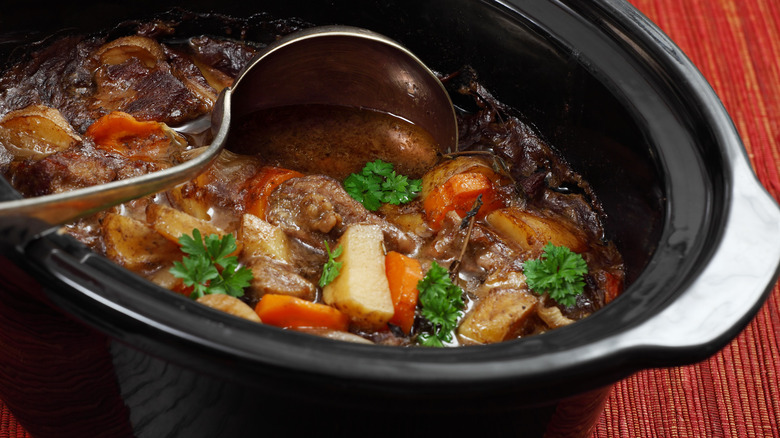There have been many debates about how to cook dried beans, but this one may be the longest-lasting. The disagreement centers on whether or not beans should be soaked before cooking. Take this tasty Instant Pot recipe for vegan red beans and rice. The directions make it clear that the dried beans need to be soaked for an hour before cooking. So that settles it, right?.
Wrong. Russ Parsons’ article for the Los Angeles Times, “Dont Soak Your Dried Beans! Now Even the Cool Kids Agree,” has a very interesting title that makes you think. It clearly takes a different stance. Miriam Hahn came up with the red beans and rice recipe. She says that soaking the beans helps them cook a little faster and also helps with digestion. “Parsons disagrees, saying, “Soaking beans does shorten the time they need to cook while you’re away from them a little, but the time saved is small, and there are no other labor-saving benefits.” “.
What should a home cook do with this advice that seems to be at odds with each other? To find out, we need to look a little deeper into the science.
Kidney beans are a staple ingredient in many classic dishes like chili, red beans and rice, and three bean salad. Their meaty texture makes them a favorite for vegetarians and a great source of plant-based protein. But kidney beans contain a dangerous toxin that can cause severe vomiting and nausea if they are not properly prepared before cooking.
The Dangers of Undercooked Kidney Beans
Raw kidney beans contain high levels of phytohaemagglutinin or PHA, which is a lectin protein that is toxic to humans. PHA acts as a natural pesticide for the kidney bean plant to help ward off insects and animals. But when we eat it, PHA binds to receptors on our intestinal cells and causes them to leak resulting in extreme stomach upset diarrhea, and vomiting.
Just a few undercooked kidney beans can bring on symptoms within a couple hours of ingestion. Though not usually fatal kidney bean poisoning can be very debilitating and painful.
Why Slow Cookers Don’t Reach High Enough Temperatures
Slow cookers cook food at lower temperatures over longer periods of time. A typical slow cooker operates between 190-200°F on low and 280-300°F on high. This allows tough cuts of meat to become fall-off-the-bone tender and makes beans soft and creamy.
But these relatively low temperatures are not high enough to destroy the PHA in kidney beans. According to studies, dry kidney beans need to reach at least 212°F for 10 minutes to break down the toxin. This temperature is only reached on the stove in boiling water.
Slow cookers simply can’t heat up to the required temperature to make kidney beans safe to eat.
How to Safely Cook Kidney Beans
The good news is kidney beans can be made totally safe by following a few preparation steps before you add them to the slow cooker.
Here is the proper way to cook dry kidney beans:
- Soak beans in water for at least 5 hours or overnight
- Drain the soaking water and rinse the beans
- In a pot, cover beans with fresh water and bring to a rolling boil for at least 10 minutes
- Drain and add beans to the slow cooker
It’s very important to use fresh water when boiling the beans, as the PHA toxin will leach into the soaking liquid.
Canned kidney beans can also be used without worry, as the high heat processing used by commercial canners destroys any PHA present.
Just make sure to drain and rinse canned beans to remove excess sodium and sulfides that contribute to gas and bloating.
Kidney Bean Poisoning Symptoms
If you accidentally eat undercooked kidney beans, be on the lookout for these common symptoms which can start as soon as 1-3 hours later:
- Nausea
- Vomiting
- Diarrhea
- Abdominal pain and cramping
- Chills
- Headache
- Fatigue
In severe cases, kidney bean poisoning can also cause:
- Dehydration
- Bloody stool
- Low blood pressure
- Hypoglycemia
Seek medical treatment if symptoms persist or become severe. IV fluids may be administered for dehydration and medications can help control nausea and diarrhea.
Who is Most at Risk?
Some people are more susceptible to the effects of PHA in kidney beans and should take extra precautions:
- Children
- The elderly
- Individuals with compromised immune systems
Children tend to be affected more severely because of their lower body weight compared to adults. And individuals who are already weak or ill may have severe reactions to even a small amount of undercooked beans.
Safer Kidney Bean Alternatives
If you or a family member is especially vulnerable to foodborne illness, there are some safer alternatives you can use in place of red kidney beans:
- White kidney beans. Also called cannellini beans, they contain about a third less PHA.
- Other bean varieties like pinto beans, black beans, and chickpeas which have much lower levels of toxin.
- Lentils can be used in many kidney bean recipes for tender texture and added protein and fiber.
Kidney beans can be part of a healthy diet if they are prepared properly before slow cooking. Just remember to always boil dry kidney beans for at least 10 minutes in fresh water prior to cooking in the crockpot. This simple step removes the dangerous PHA toxin so you can enjoy delicious kidney bean dishes without worry or unpleasant side effects.

It’s all about the lectins

According to the Harvard School of Public Health, lectins are “proteins that bind to carbohydrates,” and raw legumes and whole grains have very high levels of lectins. Sometimes our bodies have difficulty breaking down these proteins effectively, which can cause mild to severe gastrointestinal distress.
From what you’ve said, lectins sound scary, like something we should stay away from at all costs. But let’s take a closer look at them. Precision Nutrition says that gluten, which is used to hold flour together, is a lectin, and that some people must be very careful when they eat it or avoid it altogether. Phytohaemagglutinin (PHA) is the lectin thats present in high levels in raw beans, among other things. Even though these two lectins can make the immune system react with inflammation, research shows that lectins can also be good for your health and may even help fight cancer in some cases if you can handle them. Besides having a lot of lectins, foods often have a lot of healthy things in them, like fiber, protein, vitamin B, and healthy fats.
To make lectin-rich foods safe to eat, we need to cook, sprout, or ferment them. This lowers the amount of lectins in the food to a level that is safe for consumption.
And that’s why your cooking method matters

So circling back to the debate, our guts certainly need help breaking down lectins, and there are a few things that can do so effectively. It turns out that (Hahns method) soaking beans and boiling them for at least 10 minutes, says Chow Line, or (Parsons method) cooking them on high heat longer without soaking are good ways to give our bellies a break.
What absolutely doesnt work is cooking them “at low heat such as in a slow-cooker” because it “will not remove all the lectins” (via Harvard School of Public Health). Slow cookers on the low setting generally reach around 190 degrees Fahrenheit, according to Oven Spot, which is just not hot enough to get the job done. Whats the difference in lectin content for raw kidney beans compared to properly cooked ones? Its huge, according to Precision Nutrition; raw kidney beans contain between 20,000 and 70,000 units of lectin, while safely cooked kidney beans contain between 200 and 400 lectin units. Boiling the beans eliminates the majority of the lectins, and slow cookers just dont get hot enough to make raw beans safe for consumption.
You can make a tasty recipe for spicy pinto beans on the stove instead of in a slow cooker, but if you have a good reason to use a slow cooker, there are ways to make sure your food is safe to eat.
Why You Should Absolutely Never Cook Raw Beans In A Slow Cooker
FAQ
Why shouldn’t you cook beans in a slow cooker?
Can you cook kidney beans in the slow cooker?
Can kidney beans be cooked in a slow cooker?
Kidney beans should not be cooked from raw in a slow cooker. The protein, called phytohaemagglutinin, in kidney beans is toxic and can make you ill if not cooked properly. Here is what I discovered about whether it is safe to cook beans in a slow cooker.
Can you cook dried beans in a slow cooker?
Luckily cooking these dried beans safely is as easy as 1-2-3. 1. Soak the dried beans for a minimum of 5 hours or overnight. 2. Drain the soaked beans and put them in a large pot. Add enough fresh water to cover them by 2 inches. Bring to a boil. Boil the beans for 30 minutes. 3. Drain the beans and use in your slow cooker recipe.
Can you cook beans in a slow cooker without soaking?
Since most slow cookers do not reach the boiling point (212°F), beans prepared in them without soaking and cooking them first will carry the toxic lectin. (And no need to worry about canned beans; they’ve already been prepared properly.)
Can a slow cooker make you sick?
Turns out cooking dried red kidney beans and cannellini beans in your slow cooker can make you sick. Find out how to eliminate the toxin that can make you ill and how to safely prepare and cook these commonly used legumes. Pictured Recipe: Mom’s Chili
